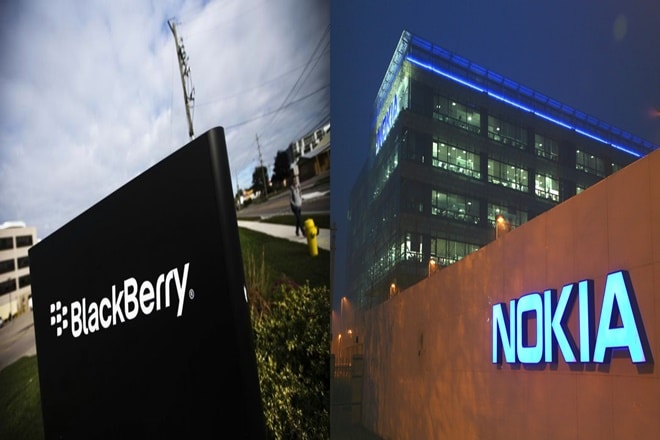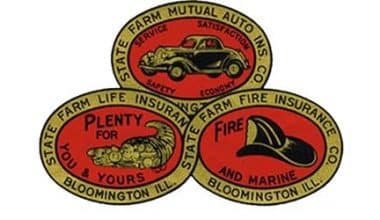Over the years, the Coca-Cola logo has become one of the most famous emblems thanks to Christmas advertising. In the course of its evolution, the logo was associated with a holiday, a good mood, and the expectation of a miracle. Red letters, which resemble vibrant ribbons, are a symbol of love, the fulness of life, and beauty. But that’s just on the surface. This article covers and in-depth analysis of the evolution, meaning, and history of the Coca-Cola brand and logo.
Overview
The Coca-Cola logo requires no introduction. The Coca-Cola Company and its flagship fizzy beverage have one of the most well-known brand identities in the world, with its red and white colors and script font covering almost every sign and shop shelf.
What’s especially impressive about the Coca-Cola logo is its longevity. The Coca-Cola logo hasn’t changed much over its 130-year history. It was originally very much a logo of its time – look at logos from the period and you’ll find plenty of flowing script designs – including the first Pepsi logo just a few years later.
However, while many other iconic brands have chosen to simplify and modernize their logo designs, the Coca-Cola logo has defied the trend. Take a look at the Coca-Cola logo from 1887; while the red color hadn’t yet been introduced and the Spencerian script isn’t exactly the same, it’s just as recognizable as the Coca-Cola logo of today. However, there have been a few tweaks and temporary changes along the way.
Here are all of the major changes to the Coca-Cola logo throughout its history that we have records of.
What is the Coca-Cola Company’s Symbol?
Coca-Cola’s symbol is the iconic script logotype, which was first introduced at the end of the 1880s. The current wetsuit of the symbol first appeared in 1903, and by 1934, it had turned an intense shade of red. Since then, the logotype has been refined and strengthened while maintaining its distinct style and mood.
The History of the Coca-Cola Logo
The brand’s history began when the beverage’s inventor, John Stith Pemberton, asked his bookkeeper, Frank M. Robinson, to help him brand his creation. Frank immediately suggested the simple and mark-hitting ‘Coca-Cola’. The marketing strategy was a success, and Frank created the first logo – the handwritten name of the company – a year later. The handwriting has proven to be an everlasting element, as it has survived numerous logo changes unchanged except for the color.
What Exactly Is Coca-Cola?
Coca-Cola is the world’s most famous soft drink brand, founded in 1886 by John Stith. Bottles with red and white Coca-Cola labels can now be found in almost every supermarket and grocery store around the world. The most intriguing aspect of the brand is that only a few people are aware of its original recipe.
The Coca-Cola Logo’s Evolution
Coca-Cola logo: 1886
Coca-Cola was invented in 1886 by John Pemberton as Pemberton’s French Wine Coca. However, in response to prohibition laws, a non-alcoholic version emerged, and Pemberton’s partner Frank Mason Robinson coined a new name.
Robinson foresaw that two C’s would stand out in advertising, and thus Coca-Cola was born. Early advertisements feature the name written in a simple serif font. With a complete stop.
Coca-Cola logo: 1887
It was also Robinson’s idea to create a logo based on Spencerian script, a flowing writing style that was widely used in the United States for formal correspondence prior to the adoption of the typewriter – right up until the early 1920s. He desired a dramatic style, and his proposal was accepted unanimously.
The Coca-Cola script was tweaked fairly frequently in those early years, and advertising materials show plenty of variations, but this initial version isn’t all that dissimilar to the Coca-Cola logo we know today, with the swash leading into the first ‘o’ being the most noticeable difference at first glance.
Coca-Cola logo: 1889 and 1890
Even at this early stage, Coca-Cola liked to shake things up every now and then with eye-catching changes. It experimented with separated letters, diamonds, and elongated tails in 1889, bringing even more attention to the two Cs. And in 1890, it rode the Art Nouveau wave with the most radically different Coca-Cola logo to date, with elegant swirls and what appears to be musical notation. However, it appears that this design was only used once, on the company’s first calendar.
Coca-Cola logo: 1891
Coca-Cola’s color palette is as well-known as the shape of the logo itself, and it wouldn’t be long before red was introduced. There are examples of the Spencerian script logo in red on a white background as early as 1891. The script isn’t quite what we’re used to – the letters are taller and straighter – but it’s instantly recognizable.
Coca-Cola logo: 1893
After the logo was trademarked with the US Patent Office in the 1890s, the words ‘trade mark’ were added to the tail of the ‘C’ in Coca. Notice how close the script is to its original form – and the Coca-Cola logo we know today.
Coca-Cola logo: 1941
Coca-Cola chose what would become the definitive form of its script logo in 1941. The leading swash was removed from the ‘o’ in ‘Coca,’ the letters were slanted diagonally, and overall balance was achieved by honing the size and weight of each letter – for example, dropping the oversized teardrop terminal on the initial ‘C’.
The trademark information was also removed from the logo. Instead, it would be written beneath the logo in its various applications, eventually taking the shape of a R at the end of the logo.
Coca-Cola logo: 1958
Coca-Cola quickly began experimenting with different logo backgrounds and applications. The Coca-Cola logo was frequently used on a red disc or button in advertising, including outdoor signage, in the 1940s. A fishy arciform shape was used for advertising, signage, and vending machines in the late 1950s.
Coca-Cola logo: 1969
The introduction of the white wave, technically known as a ‘Dynamic Ribbon Device’, was the next evolution of the Coca-Cola logo. The wave, which is still in use today, was introduced in what became known as the classic Arden Square after cosmetics entrepreneur Elizabeth Arden. The square also added the word ‘Enjoy’ to replace the previous ‘Drink’ used in advertisements. For years, one simple word became an instantly recognizable part of the Coca-Cola brand.
Coca-Cola logo: The 1987 Redesign
That ‘dynamic ribbon device’ became more dynamic than perhaps intended, and has been the source of many of the most notable changes in Coca-Cola logo applications since its introduction. The wave was made to flow right through the Coca-Cola script in 1987, and a grey shadow was added to create the illusion of depth.
Coca-Cola logo: 2003
With the launch of the “Coca-Cola… Real” campaign in 2023, the wave became even more prominent. The ribbon went for a positively maximalist look this time, with more lines, dark red, a splash of yellow, and some bubbles.
Coca-Cola logo: The Coca-Cola hug logo
In 2021, a new variation of the Coca-Cola logo was introduced for the ‘Real Magic’ campaign. The Coca-Cola hug was designed to embrace genuine “moments of magic” across Coca-Cola’s communications, and was inspired by how the Coca-Cola logo appears on bottles and in the shape of people hugging. Aww.
Today’s Coca-Cola logo
The Coca-Cola logo used today is not dissimilar to the logo first introduced in 1887. The script, which saw frequent changes in the early days, has now been the same for decades, and the white wave, which was introduced in 1969, has also endured – though its form has changed slightly. Following color experiments, it is now a more simple single white ribbon.
Colors and Font
Coca-Cola cans and bottles bear the brand name in large letters. This is the well-known emblem designed by accountant Frank Robinson in 1887. Modern designers have altered the font slightly, changing the slant and color. However, the changes did not affect the overall concept: the curly lettering in calligraphic handwriting, as before, takes center stage on the logo.
Because the brand name contains no graphic images and is entirely composed of text elements, the developers paid special attention to typography. The font is designed to look like handwriting, but the first “C” letters are separated from the rest and decorated with long decorative curls. This is a prime example of Spencer’s handwriting, which was created in the 1840s and was used for business correspondence in the United States prior to the invention of typewriters.
The writing style depicted on the 1890-1891 emblem is markedly different. The company’s name looked atmospheric at the time: the letters had many large dots and unusual curls, giving the impression of a fairy forest. However, the company’s owners decided to return to the standard Spencerian Script, abandoning such experiments for good.
The color scheme is also uninteresting. Only black and white emblems were used until 1891. Then Coca-Cola became associated with bright red hues, and black became obsolete. The background color is still white, but the palette can change depending on the visual context. Variants with white lettering and a red backing, for example, are known. This color scheme expresses excellence, purity, optimism, and youth, all of which are values that the brand aspires to.
What Distinguishes the Coke Logo?
The wordmark, done in a unique Spencerian typeface, is the most distinguishing feature of the Coca-Cola logo. The inscription, set in a handwritten font, appears very fancy and elegant, with no analogs in the world of visual identity.
Why Was Red Used in Coca-Cola’s Logo?
At the start of its history, the company chose red as its primary color. Today, it is impossible to imagine the Coca-Cola logo in any other color. Coke red is an unavoidable part of the brand’s visual identity, representing power and excellence. However, there is an interesting backstory: Coca-Cola used red containers for its beverage so that it would not be confused with other products when delivered to pharmacies.
What Does the Coca-Cola Logo Stand For?
The logo represents the brand’s name as well as the lively mood that its drinks exude. The stylized lettering dates back to 1887, when Frank Robinson, an accountant, learned calligraphy and created a trademark for Coca Cola.
The Origins of Coca-Cola
John Pemberton, an Atlanta pharmacist and optometrist, invented Coca Cola in May 1886. According to the company, Pemberton created the Coca-Cola syrup, which was tested and approved for consumption at Jacob’s Pharmacy in the neighborhood.
The syrup was combined with water to create a new delicious and refreshing beverage. Pemberton created the famous drink’s recipe in a brass kettle at home.
Coca-Cola is Created
Frank Robinson, Pemberton’s accountant and business partner, suggested the name Coca-Cola. Because the syrup’s recipe required coca leaf extract and kola nut caffeine extract, it was simple to coin the name Coca Kola.
However, Robinson, who was an excellent pen writer, thought that using a pair of Cs in the brand would look impressive in advertising. As a result, kola evolved into cola, giving rise to the Coca Cola brand name. Robinson is also credited with creating the first Coca Cola script, which features the smooth letters that serve as the popular logo today.
The Coca Cola Company sold its first soft drink to the general public on May 8, 1886, at Jacob Pharmacy’s soda fountain in Atlanta. Every day, about nine servings of the beverage were sold. The total sales in the first year were around $50. Clearly, Coke’s first year of operation was a failure, as Pemberton spent more than $70 to produce the drink, resulting in a loss.
Coca-Cola Expansion
Asa Candler, an Atlanta pharmacist and businessman, paid Pemberton $2,300 for the Coca Cola formula in 1887. Unfortunately, Pemberton died a few years later.
Coca Cola had become one of the most popular fountain beverages in the United States by the end of the 1890s, owing largely to Candler’s relentless marketing efforts. Between 1890 and 1900, Coca-Cola syrup sales increased by more than 400% under Candler’s leadership.
While the company denies this claim, evidence from their history suggests that, prior to 1905, the Coca Cola beverage, which was sold as a tonic, may have contained caffeine from kola nut extracts and cocaine extracts. While cocaine was only made illegal in 1914, Candler began removing it from the recipe in the early 1900s. Scientists eventually removed all psychoactive elements from coca leaf extract in 1929.
Advertising was critical to the Coca-Cola Company’s success, and by the early 1900s, the beverage was available throughout the United States and Canada. Around the same time, Coca-Cola began selling syrup to separate bottling companies authorized to sell Coke. Even today, the soft drink industry in the United States operates on this principle.
The Beginning of Bottling
Coca-Cola’s promotion and marketing efforts resulted in a significant increase in demand. As a result, Mississippi businessman Joseph Biedenharn began bottling the beverage, making it portable. Candler had set up syrup factories in many cities by 1895, including Los Angeles, Chicago, and Dallas, to meet rising demand.
While Candler was a savvy businessman, he failed to recognize that Coca Cola’s future lay in portable bottles rather than soda fountains. As a result, Candler sold the exclusive rights to bottle Coke to two lawyers, Joseph Whitehead and Benjamin Thomas, in 1899.
As the bottled version of the drink gained popularity, counterfeit Coke drinks began to appear. This prompted Coca-Cola to advertise its drink as genuine and to run public awareness campaigns encouraging people to buy the genuine drink. Coca-Cola began producing contour-shaped bottles in 1916. This classic bottle design allowed the company to distinguish its product from counterfeits.
International Growth
Ernest Woodruff led a group of investors in acquiring Coca Cola in 1919. Woodruff’s son Robert was appointed president of the company in 1923. Robert Woodruff expanded Coca-Cola and introduced it to the rest of the world.
Coca-Cola began distributing a half-dozen bottles, encouraging people to buy the drink for home consumption. Coke was one of the Olympic sponsors in 1928, giving the company even more global exposure and launching a tradition that continues to this day.
When America entered the Second World War in 1941, the demand for Coke among American soldiers stationed overseas increased dramatically. To meet rising demand, Coca-Cola began constructing bottling plants abroad under the direction of Woodruff. From the mid-1940s to 1960, the number of countries with bottling plants nearly doubled, paving the way for Coke to do business globally.
Following WWII, overseas Coke consumers requested more options when purchasing the beverage. Coke was sold in 6.5 oz. cans until the mid-1950s. contour bottle made of glass. However, in 1955, the company began producing larger bottles, followed by metal flasks in 1960. Coca-Cola began producing their first two-liter plastic bottles in 1977.
Marketing Efforts
Advertising has always been a top priority for the Coca-Cola Company. Famous slogans and songs created the image of Coke as an enjoyable and refreshing drink throughout the company’s history. Coca-Cola’s famous ad “I’d like to buy the world a coke” debuted in 1971.
Diet Coca-Cola
Coca-Cola introduced Diet Coke in 1982, under the new leadership of Roberto C. Goizueta, becoming the company’s first trademark extension. Diet Coke was a huge success, and within a few years, it had become the world’s most popular low-calorie soft drink. Following the success of Diet Coke, Goizueta set out on a mission to reformulate Coke and create a new flavor.
Coca-Cola Zero
Coca-Cola changed its formula for the first time in nearly 100 years, launching New Coke in 1985. Despite passing sampling tests with flying colors, customers demanded that Coca-Cola return to the original recipe, which was reintroduced as Coca-Cola Classic. After underwhelming sales, New Coke was eventually discontinued in 2002.
Coca-Cola’s Present and Future
Today, as consumers around the world seek out new and exciting beverage options, Coca-Cola is experimenting with new ways to capitalize on rising trends by investing in or acquiring rapidly growing soft drink brands.
In 2007, the company’s North American division began looking for and identifying potential billion-dollar soft drink brands that Coca Cola could acquire. As a result, Zico, Honest Tea, Core Power, and Suja are among the brands in which the company has invested or acquired.
Conclusion
Coca-Cola and the Coke Logo represent far more than just a soft drink. From a local soda fountain to the most iconic refreshment in the United States, the 19th century-born soft drink has come a long way.
Coca-Cola, or Coke, has had a tumultuous history since its inception in 1886. The company’s ever-changing story has spanned many decades, acquainting itself with the roaring 1920s era, the disco era of the 1970s, and finally the current technology-driven modern era.
Despite the countless slogans, logos, and promotional campaigns, the company has remained true to its roots of happiness, fun, and enjoying life’s little pleasures.
Related Articles
- THE COCA-COLA HISTORY: Success Facts
- Top 5 Cold Calling Tips For Successful Sales
- COCA-COLA BRAND STORY: 5 Growth Attributes (Updated)
- COKE LOGO: Meaning, What Changed, and How Much It Is Worth






